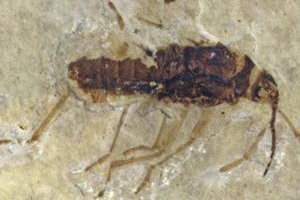BEIJING, July 25 (UPI) -- Previously, the most ancient evidence of bloodsucking insects was 100 million years old. But researchers in China have unearthed a number of bug specimens that date to 130 million years ago.
One of the fossilized bugs, discovered by researchers Capital Normal University in Beijing, was found to be full of iron, suggesting the insect perished just after sucking animal blood. It's the earliest example of a blood-feeding insect.















